Summary of all activities of Metallic Construction Materials group is here.
For corrosion testing, click here.
Water, heat, thermal cycles, sun irradiation and combination of these factors cause changes in properties of natural and synthetic materials such as wood, leather, paper, textile, plastics, organic coatings and adhesives. Weathering tests are used for the assessment of material and product resistance against climatic degradation factors both in exterior and interior. The effect of climatic parameters on colour changes, gloss, strength, elasticity, adhesion and other properties is evaluated. The tests are used widely for example in automotive, textile, packaging and building industry.
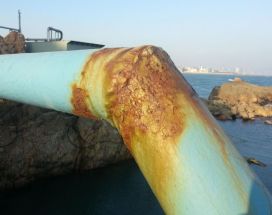 |
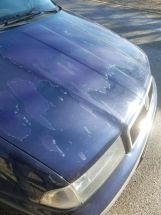 |
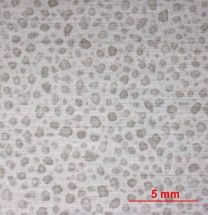 |
Our testing laboratory is equipped with climatic, condensation, UV, sun irradiation and other chambers, which allow us performing most standardized and customer-defined weathering tests.
We run weathering tests for industry and within research and development projects.
Water condensation and high humidity tests
|
EN ISO 6270-1 Paints and varnishes - Determination of resistance to humidity - Part 1: Condensation (single-sided exposure) EN ISO 6270-2 Paints and varnishes - Determination of resistance to humidity - Part 2: Procedure for exposing test specimens in condensation-water atmospheres EN ISO 13523-25 Coil coated metals - Test methods - Part 25: Resistance to humidity
EN 13523-26 Coil coaled metals - Test methods - Part 26: Resistance to condensation of water
EN 13523-27 Coil coaled metals - Test methods - Part 27: Resistance to humid poultice (Cataplasm test)
ASTM D2247
ASTM D1735 DEF STAN 00-35, část 3, Method CL7 DIN 50017 (invalid) Water condensation can cause corrosion degradation especially in enclosed locations. The tests are particularly suitable for painted substrates and for adhesives as an indication of tendency to blistering and loss of adhesion. |
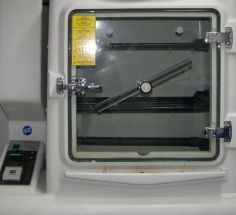 |
Weathering and UV resistance tests
The UV component of sun irradiation is an important degradation factor for organic, mostly polymeric, materials. Combination of UV irradiation, humidity and eventually other degradation factors cause susceptible materials to become brittle, chalk, crack, blister, change colour and gloss or otherwise lose their application properties.
Although the UV irradiation at wavelengths from 295 to 400 nm accounts for only 7% of total sunlight energy (visible light forms 55 % and infrared irradiation (IR) 38 % of sun irradiation reaching the Earth surface), it is responsible for almost entire degradation of organic materials. In the Czech Republic, the maximal irradiance reaches from 950 to 1350 W/m², which corresponds to radiant exposure of about 2 MWh/m² a year. The relevant yearly dose of UV irradiation can be applied artificially in a chamber with UV-emitting lamps in about 800 to 1800 hours. The exact exposure time depends on the irradiation intensity. There is a general rule that the correlation between an accelerated test and service experience will be better if the intensity of an artificial UV source is closer to sunlight intensity. Indeed, the lower is the UV intensity the longer is the test.
To break a bond in an organic molecule, energy corresponding to the bond strength has to be provided. Stable bonds such as O-H or C-H needs more energy to be broken than less stable bonds such as C-N, N-H or C-C. In view of UV degradation, stable bonds will be cleft only by high energy, i.e. low wavelength, irradiation. Besides direct cleavage of organic bonds, UV irradiation can initiate reactions with other substances such as oxygen. Interaction between irradiation and organic polymer matter necessitates absorption of an irradiation energy quantum, a photon. Ranges of irradiation wavelengths that can be absorbed in a particular material depend on the chemical composition, presence of pollutants and stabilizers (antioxidants, UV absorbers and extinguishers). Therefore, two products made of an identical polymer, e.g. PVC, may show dramatic differences in weathering resistance.
Following photochemical reaction may lead to polymer bond cleavage, monomer formation, cross-linking and other, usually undesirable reactions, which are macroscopically observable in degradation of functional properties of the product. The rate of degradation is affected also by heat (increase in temperature, dimensional changes and evaporation), presence of oxidants (oxygen, ozone, etc.) and water (chemical reactivity, increase in oxygen transport, erosion, freeze-thaw, thermal shocks).
Since the intensity and spectrum of sunlight depend on the Sun and Earth position (season), elevation, geographical location, daytime and orientation of exposed surfaces, it is practical to use standardized “average” spectra defined in Table 4 of the Publication #85 of the International Commission on Illumination (Commission internationale de l'éclairage, CIE) or in a US standard ASTM G177. They define the spectral irradiance at 340 nm as 0.68 and 0.73 W/m², respectively.
Currently, two types of lamps are used in weathering chambers: xenon arc and UV fluorescent ones. The former one provided a spectrum similar to sunlight including visible and IR components. The latter lamps emit mainly UV irradiation. Comparison of these UV sources is given in the chart.
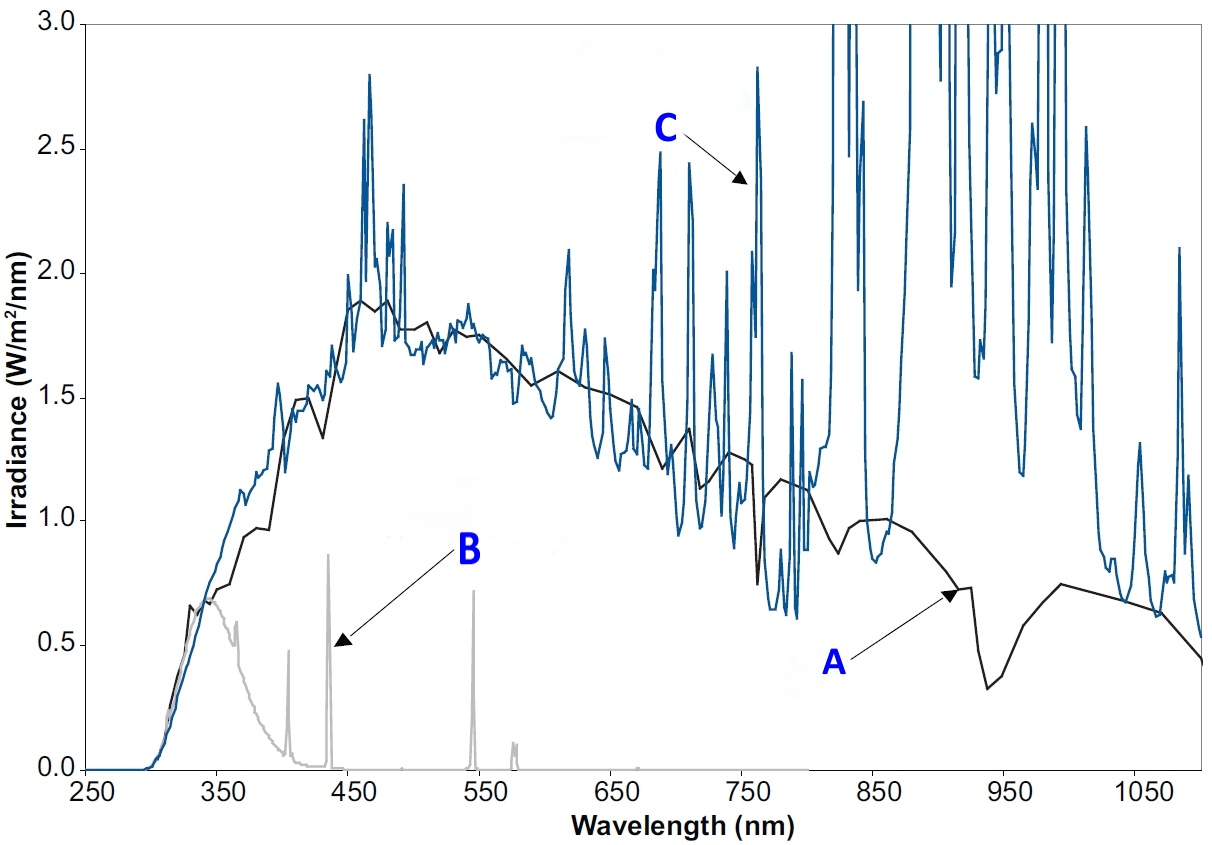 |
Comparison of sun irradiation spectrum (A) and spectra of fluorescent lamp UVA-340 (B) and xenon arc with daylight filter (C); the chart is reproduced from the Technical bulletin LU-0822 „Sunlight, Weathering & Light Stability Testing“ of Q-Lab Corporation
Tests in a chamber with xenon arc lamps
Our testing laboratory is equipped with a Q-Lab Xe3 chamber, which can run complex tests on the effect of sunlight, heat and water on the weathering resistance of organic materials such as textile, geotextile, organic coatings and paints, packaging, plastics, adhesives and sealants and 3D products made of these materials. The spectrum can be adjusted specific optical filters inserted in between lamps and specimens. Daylight, indoor light behind window glass of different types and extended UV spectra can be simulated. Besides irradiation intensity and spectrum, the chamber can control surface temperature of specimens, air temperature and air relative humidity. In addition, it is possible to spray specimens with water or any other water solution, simulating e.g. acid rain. These factors can be combined in standardized and customer-defined programmable cycles.
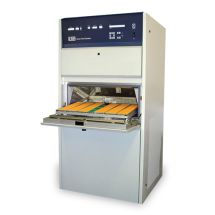 |
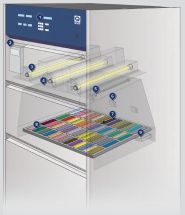 |
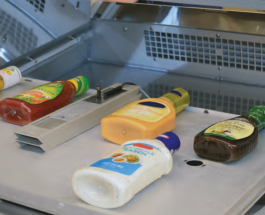 |
Figures are reproduced from materials of Q-Lab Corporation
Our laboratory can carry out tests according to the following standards in the chamber with xenon arc lamps:
|
General standards |
IEC 68-2-9, ISO 4892-1, ISO 16474-1, ASTM G151, ASTM G155, MIL-STD-810G, GB/T 16422.1 |
|
Automotive |
SAE J2412 (Ford, General Motors), SAE J2527 (Ford, General Motors), PV 1303 (Volkswagen), PV 1306 (Volkswagen), PV 3929 (Volkswagen), PV 3930 (Volkswagen), GMW 14162 (General Motors), GME 60292 (GM Opal), PF-1 1365 (Chrysler), VDA 75202 (BMW), ISO 105-B06 (Porsche), DBL 5555 (Daimler), DIN 75202 (Porsche, Daimler), 50451 (Fiat), FLTM EU BO 050-1 (Ford), GMW 14660 (General Motors), GM 9125P (General Motors), ISO 4892-2 (General Motors, Porsche), GMW 14170 (General Motors), DBL 7399 (Daimler), HES D6601 (Honda), JIS D0205 (Japan Autospec), ISO 11341 (International), ISO 4892-2 (International), ASTM D7356 (International), ASTM D7869 (International), ISO 105 B10 (International) |
|
Roofing |
ASTM D1670, ASTM D4434, ASTM D4637, ASTM D4798, ASTM D4811, ASTM D5019, ASTM D6083, ASTM D6878 |
|
Adhesives and sealants |
ASTM C732, ASTM C734, ASTM C793, ASTM C1257, ASTM C1442, ASTM C1519, ASTM C1251, ASTM C1501, ASTM C1184, ASTM D904 |
|
Printing inks and paper |
ISO 11798, ISO 12040, ISO 18909, ASTM D3424, ASTM D4303, ASTM D5010, ASTM D6901, ASTM F2366, GB/T 22771 |
|
Packaging |
ASTM D6551 |
|
Textile |
AATCC TM 16, AATCC TM 169, Adidas TM 5.11, GB/T 8427, GB/T 8430, GB/T 8431, GB/T 16991, IS: 2454, ISO 105-B02, ISO 105-B04, ISO 105-B06, ISO 105-B07, M & S C9, M & S C9A, CPAI-84 |
|
Geotextile |
ASTM D4355 |
|
Photovoltaic |
IEC 61345 |
|
Coatings |
EN ISO 16474-2 Paints and varnishes - Methods of exposure to laboratory light sources - Part 2: Xenon-are lamps ISO 11341, ISO 15110, ASTM D3451, ASTM D3794, ASTM D6577, ASTM D6695, GB/T 1865, MIL-A-8625-F, MIL-P-14105-D, JIS K 5600-7-7, MPI: #113, MS 133: Part F14, IRAM 1109-B14:2008, JDQ-533, #85 FMR |
|
Plastics |
EN ISO 4892-2 Plastics - Methods of exposure to laboratory light sources - Part 2: Xenon-arc lamps ISO 29664, JIS K 7350-2, DIN EN 513, ASTM D1248, ASTM D2565, ASTM D4101, ASTM F1515, EH-438-2, ASTM D4459, ASTM D5071, ASTM D6662, UL 1581, GB/T 16422.2, GB/T 29365 |
|
Rubber |
ASTM D750, ASTM D925, ASTM D1148, ISO 3865, ISO 4665, GB/T 3511 |
|
Pharmaceuticals and cosmetics |
FDA Part III, ICH Guideline |
Tests in a chamber with UV fluorescent lamps
QUV chambers of Q-Lab are used for testing of roofing, sealants, plastics, textile, organic paints and automotive materials. Specimens are usually flat but there are sample holders able to accommodate 3D specimens as well. Specimens can be intermittently irradiated with UV, exposed to condensing water at different temperatures and sprayed with water. Most used are UVA-340 lamps with intensity maxima at 340 nm wavelength (outdoor conditions), but is it possible to apply UVA-351 (conditions behind window glass), UVB-313EL and FS-40 lamps (extreme conditions, high acceleration) and lamps emitting cool white light (simulation of conditions in office, commercial and retail buildings).
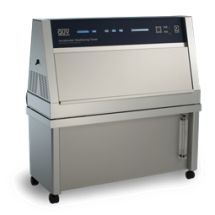 |
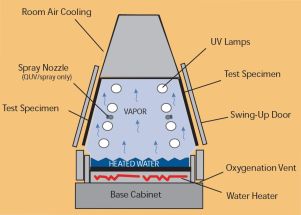 |
Figures are reproduced from materials of Q-Lab Corporation
Our laboratory can carry out tests according to the following standards in the chamber with UV fluorescent lamps:
|
General standards |
ASTM G-151, Standard Practice for Exposing Nonmetallic Materials in Accelerated Test Devices that Use Laboratory Light Sources ASTM G-154, Standard Practice for Operating Fluorescent Light Apparatus for UV Exposure of Non-Metallic Materials BS 2782: Part 5, Method 540B (Methods of Exposure to Lab Light Sources) Colts Standard Test – UV Dye Resistance to Fade - QUV GB/T 14522 – Artificial Weathering Test Method for Plastics, Coatings, and Rubber Materials used for Machinery Industrial Products – Fluorescent UV Lamps GSB AL 631 – International Quality Guidelines for the Coatings of Aluminum Building Components ISO 4892-1 Plastics- Methods of exposure to laboratory light sources-Part 1: General Guidance JIS D 0205, Test Method of Weatherability for Automotive Parts (Japan) SAE J2020, Accelerated Exp. of Automotive Exterior Matls Using a Fluorescent UV/Condensation Apparatus |
|
Plastics |
EN ISO 4892-3 Plastics - Methods of Exposure to Laboratory Light Sources-Part 3: Fluorescent UV Lamps DIN 53 384, Testing of plastics, Artificial Weathering and Exposure to Artificial Light UNE 53.104 (Stability of Plastics Materials Exposed to Simulated Sunlight) JIS K 7350, Plastics - Methods of Exposure to Laboratory Light Sources-Part 3: Fluorescent UV Lamps ASTM D-1248, Standard Specification for Polyethylene Plastics Extrusion Materials for Wire and Cable ASTM D-4329, Standard Practice for Light/Water Exposure of Plastics ASTM D-4674, Test Method for Accelerated Testing for Color Stability of Plastics Exposed to Indoor Fluorescent Lighting and Window-Filtered Daylight ASTM D-5208, Standard Practice for Exposure of Photodegradable Plastics ASTM D-6662, Standard Specification for Plastic Lumber Decking Boards ANSI C57.12.28 Specification for Accelerated Weathering of Padmounted Equipment Enclosure Integrity ANSI, A14.5 Specification for Accelerated Weathering of Portable Reinforced Plastic Ladders Edison Electrical Inst. Specification for Accelerated Weathering of Padmounted Equip. Enclosure Integrity Wisconsin Electric Power Specification for Polyethylene Signs |
|
Adhesives and sealants |
UNE 104-281-88 Accelerated Testing of Paints and Adhesives with Fluorescent UV Lamps ASTM C 1501, Standard Test Method for Color Stability of Building Construction Sealants as Determined by Laboratory Accelerated Weathering Procedures ASTM C-1184, Specification for Structural Silicone Sealants ASTM C-1442, Standard Practice for Conducting Tests on Sealants Using Artificial Weathering Apparatus ASTM D-904, Standard Practice for Exposure of Adhesive Specimens to Artificial Light ASTM D-5215, Standard Test Method for Instrumental Evaluation of Staining of Vinyl Flooring by Adhesives American Plywood Assn., Approval Procedures for Synthetic Patching Materials, Section 6 |
|
Printing inks |
ASTM F1945, Lightfastness of Ink Jet Prints Exposed to Indoor Fluorescent Lighting |
|
Textile |
AATCC Test Method 186, “Weather Resistance: UV Light and Moisture Exposure” ACFFA Test Method for Colorfastness of Vinyl Coated Polyester Fabrics |
|
Coatings |
EN ISO 16474-3 Paints and varnishes - Methods of exposure to laboratory light sources - Part 3: Fluorescent UV lamps EN ISO 11997-2 Paints and varnishes - Determination of resistance to cyclic corrosion conditions - Part 2: Wet (salt fog)/dry/humidity/UV light (combined corrosion and weathering test) UNE 104-281-88 Accelerated Testing of Paints and Adhesives with Fluorescent UV Lamps ASTM D-3794, Std. Guide for Testing Coil Coatings ASTM D-4587, Std. Practice for Light/Water Exposure of Paint GB/T 8013 Anodic Oxide Coatings and Organic Polymer Coatings on Aluminum and its Alloys GB/T 16585 Rubber, Vulcanized Test Method of Resistance to Artificial Weathering – Fluorescent UV Lamps GM 4367M Topcoat Materials - Exterior GM 9125P Laboratory Accelerated Exposure of Automotive Material ISO 11507, Exposure of Coatings to Artificial Weathering-Exposure to Fluorescent UV and water ISO 20340, Performance Requirements for Protective Paint Systems for Offshore and Related Structures JIS K 5600-7-8, Testing Methods for Paints M5982-1990, Test Method for Accelerated Weathering MS 133: Part F16: Exposure of Ctgs to Artificial Weathering- Exposure to Fluorescent UV and Water (ISO 11507) NACE Standard TM-01-84 Procedures for Screening Atmospheric Surfaced coatings NBR -15.380 Paints for buildings–Methods for performance evaluation of paints for non-industrial buildings – Resistance to UV irradiation/water vapor condensation, by accelerated test NISSAN M0007, Fluorescent UV/Condensation Test prEN 927-6– Pt. 6: Exposure of Wood Coatings to Artificial Weathering Using Fluorescent UV and Water UNE 104-281-88 Accelerated Testing of Paints and Adhesives with Fluorescent UV Lamps FED-STD-141B |
|
Roofing |
EN ISO 13523-10 Coil coaled metals - Test methods - Part 10: Resistance to fluorescent UV radiation and water condensation BS 903: Part A54 Annex A & D, Methods of Testing Vulcanized Rubber CGSB-37.54-M, Canadian General Standards Board Spec. for PVC Roofing & Waterproofing Membrane DIN EN 534, Corrugated Bitumen Sheets EOTA TR 010, Exposure procedure for artificial weathering RMA Specification for Reinforced Non-Vulcanized Chlorosulfonated Polyethylene Sheet for Roofing Membrane ASTM D-4799, Test Method for Accelerated Weathering of Bituminous Roofing Materials ASTM D-4811, Std. Specification for Non-vulcanized Rubber Sheet Used as Roof Flashing ASTM D-3105, List of Test Methods for Elastomeric and Plastomeric Roofing & Waterproofing ASTM D-4434, Std. Specification for PVC Sheet Roofing ASTM D-5019, Std. Specification for Reinforced Non-Vulcanized Polymeric Sheet Used in Roofing Membrane ANSI/RMA IPR-1-1990 Req. for Non-Reinforced Black EPDM Sheet for Roofing Membrane ANSI/RMA IPR-2-1990 Req. for Fabric-Reinforced Black EPDM Sheet for Roofing Membrane ANSI/RMA IPR-5-1990 Req. for Non-Reinforced Non-Black EPDM Sheet for Roofing Membrane ANSI/RMA IPR-6-1990 Req. for Fabric-Reinforced Non-Black EPDM Sheet for Roofing Membrane EN 1297, Flexible sheets for waterproofing—Bitumen, plastic and rubber sheets for roof waterproofing — Method of artificial ageing by long term exposure to the combination of UV radiation, elevated temperature and water |
For corrosion tests, click here.
We can help with selection of the optimal procedure in view of the required product lifetime and service conditions.
We provide complete service including sample preparation and intermediate and final evaluation of the material stability. Our analytical, electrochemical, metallographic and further equipment allows for detail characterization of eventual degradation.
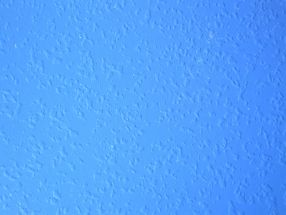 |
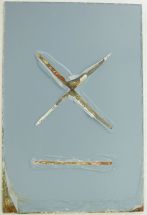 |
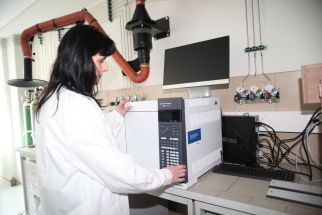 |
Service data are often required for confirmation of laboratory results. We oversee field exposures at well-managed natural weathering sites in the Czech Republic and other European countries, USA, China and elsewhere.
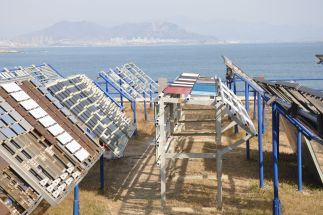 |
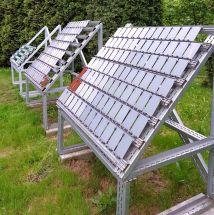 |
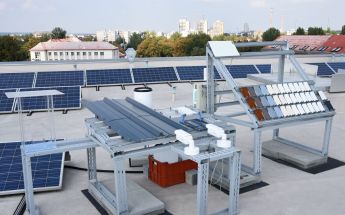 |
About us
Technopark Kralupy is a spin-off of The University of Chemistry and Technology Prague serving the Czech and international industry in the field of building chemistry and similar subjects since 2015.
Contact
Department of Metallic Construction Materials
Technopark Kralupy of the University of Chemistry and Technology Prague
Technopark Kralupy VŠCHT Praha
Náměstí G. Karse 7
278 01 Kralupy nad Vltavou
Czech Republic
kovy@technopark-kralupy.cz
Phone: +420 220 446 104, +420 723 242 413
© 2017–2024 Technopark Kralupy


